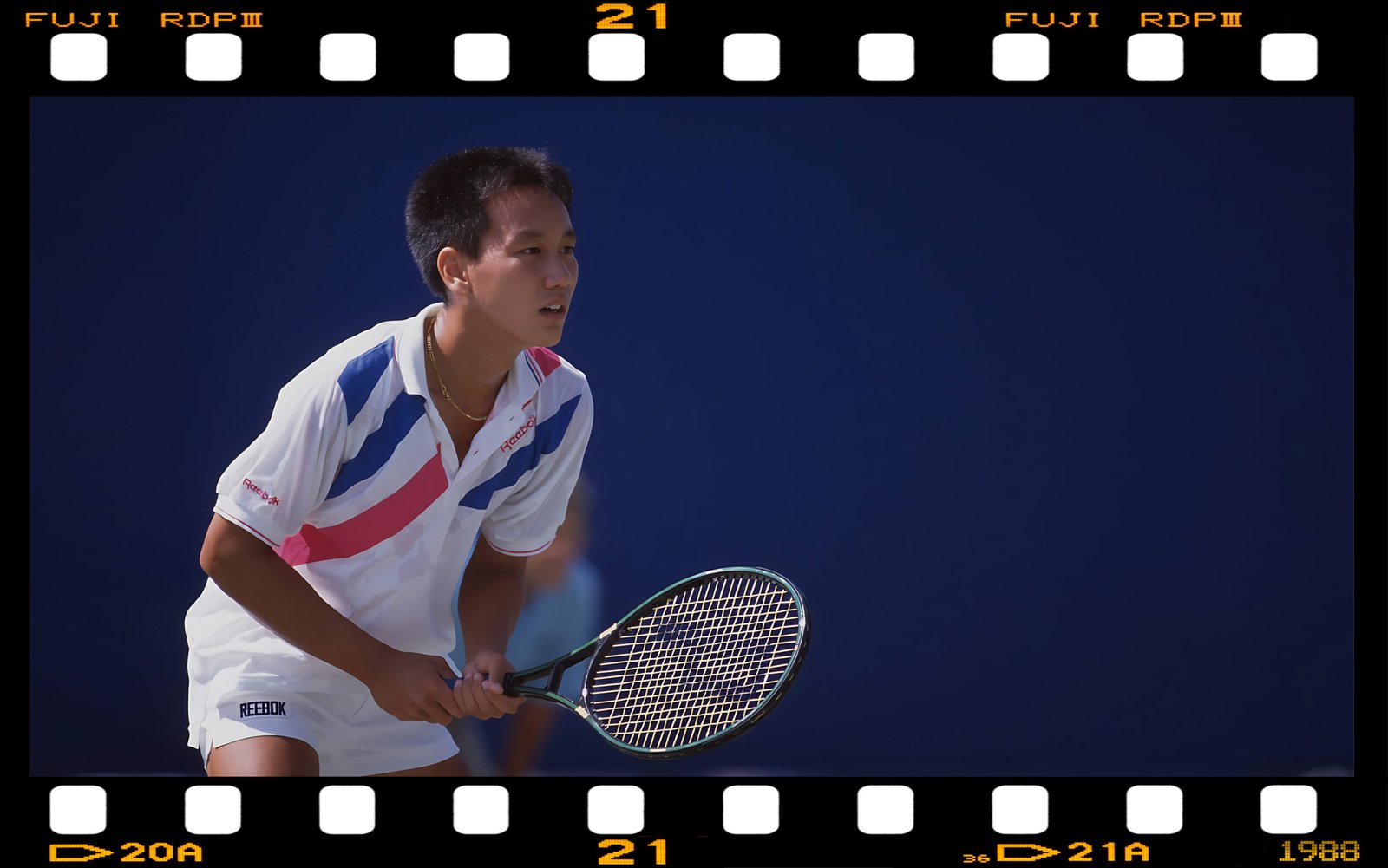Condition
9
10: New
9: Mint
8: Excellent
7: Good
6: Fair
5: Average
4: Below Average
3: Poor
|
Rarity
8
10: Impossibly rare
9: Extremely rare
8: Hard to find
7: Fairly rare
6: Uncommon
5: Common
<4: Big Seller
9: Mint
8: Excellent
7: Good
6: Fair
5: Average
4: Below Average
3: Poor
9: Extremely rare
8: Hard to find
7: Fairly rare
6: Uncommon
5: Common
<4: Big Seller
– – – – – – – – – – –
About This Racket
In the late 70s almost all manufacturers experimented with new materials including graphite, fibre glass and carbon. In 1979 Pat cash won with prince pro but they took a big step forward with the Prince Graphite that initially cost $250 (ie around $2000 today). Over 10 years they perfected it was the “Prince Original Graphite” and in 1989 Michael Chang won the French Open with the Prince Original Graphite racket at age of 17! It become the No. 1-selling racket and helped boost Prince sales 55% this year. Overall, with three models—the Graphite, Woodie and Pro—among the 12 best-selling rackets, Initially in 1990, Prince came from nowhere to gain 13% of the market just behind HEAD/AMF (28%) and Wilson (24%) but then by 1995 market share was up to 30% and likely peaked around 35%.
Historic Gallery
Specifications (👋 not yet accurate….check back soon)
| Measurements | Value | Performance | Score |
|---|---|---|---|
| Weight | 360g | Power | 19/100 |
| Head Size & Length | 65sq in | 27inch | Control | 41/100 |
| Balance | 5pt head heavy | Spin | 40/100 |
| Grip | Perforated leather | Handling | 78/100 |
| Strings | 18 x 20 | synthetic | Comfort | 89/100 |
| Flexibility | RA 43 | Consistency | 59/100 |
About Howard Head & Prince
Howard Head, born in 1914, initially pursued an English degree at Harvard but switched to engineering due to his aptitude for structural visualization. After graduating, he worked for Glenn Martin Aircraft Company, where he contributed to the design of military aircraft during World War II. His engineering career took a significant turn when he went on a ski trip and found the heavy wooden skis unmanageable. Head returned to his workshop and invented a flexible laminated ski using aluminum and plastic, which led to the creation of the Head Ski Company.In 1969, after selling his ski company, Head retired and took up tennis. Frustrated by his poor performance, he began modifying tennis rackets in his home workshop. He realized that by increasing the size of the racket’s face, he could reduce twisting and improve control. This innovation led to the creation of the oversized tennis racket, which significantly enhanced his game and later became a commercial success. Despite facing resistance from traditionalists, the success of players like Pam Shriver and Michael Chang with Prince rackets validated his designs.
Gallery
Prince by Time
| YEAR | EVENT |
| 1947 | Howard Head, aircraft engineer, invents better skis. |
| 1969 | Head sold his ski company to AMF and retired, taking up tennis. |
| 1970 | Bob McClure invents Little Prince, the first home tennis ball machine. |
| 1971 | Howard Head improves the Ball Machine and becomes majority owner. |
| 1976 | Howard Head invents the first oversized racquet, the Prince Classic. |
| 1978 | Pam Shriver reached US Open final with a Prince racquet. |
| 1978 | Prince develops its first multi-filament string. |
| 1979 | Pat Cash won with Prince Pro racquet. |
| 1979 | Prince Pro becomes the best-selling aluminum racquet. |
| 1980 | Prince Graphite became the No. 1-selling racquet. |
| 1982 | Prince introduces the P-200 Stringing Machine. |
| 1982 | Prince sold to Chesebrough-Ponds for $62 million. |
| 1989 | Michael Chang won the French Open with Prince Original Graphite racquet. |
| 1989 | Prince introduced the Long Body racquet, success for Michael Chang. |
| 1989 | Prince created the 14×18 super spin string pattern. |
| 1997 | Patrick Rafter wins US Open with Prince Precision Response racquet. |
| 2001 | Capriati wins Australian and French Opens. |
| 2012 | Prince filed for bankruptcy due to competition and financial downturn. |








